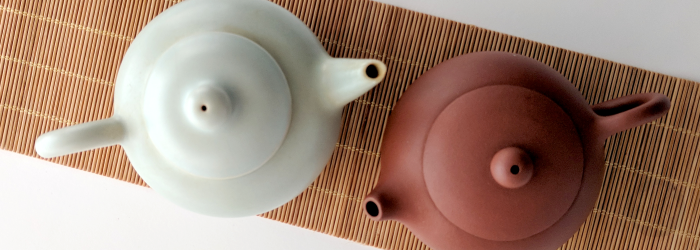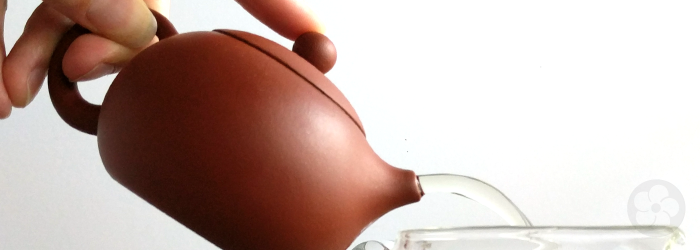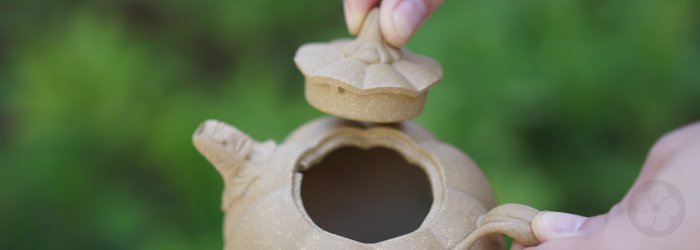Picking the Perfect Teapot: Functional vs. Decorative

Since teapots were first invented (probably during the Ming Dynasty), the classic form has been adapted and reimagined in every corner of the world. From the Brown Betty in England to the ornate metal pots used in Morocco, cultures around the world have created their own teapots to suit their own unique tea habits. Over time, teapots have become more than just a functional vessel for brewing tea, and have taken on a new role as collectible pieces of art.
Learn more about the history and use of teapots >>
While decorative details don’t negate a pot’s usefulness, it can be helpful to distinguish between those that are meant for everyday use and those that are designed for display. Regardless of aesthetic value, there are a few functional details that are important to pay attention to when buying a pot to brew tea in.

1. Balance
The most obvious sign that a teapot is an art piece rather than a brewing vessel is a handle that is not big enough to hold the weight of the full pot. Unusual proportions between the handle, body, and spout are artistically interesting, but rarely make for a useable pot. The handle serves a purely functional purpose when the pot is full of hot water and heavy, and a handle that is too small (or too large) for the body of the pot will make spills and burnt fingers more likely. Look for even proportions and balance when choosing a pot to brew in.
2. Pour
On a similar note, the spout should also be in proportion, with a gentle taper from the base to the tip. A spout that is too small will lead to a slow pour and stewed leaves, while a spout that’s too large or heavy will throw off the balance of the pot and make it hard to hold, prone to tipping forward in the hand.

The shape of the spout is also important. A wide base and a narrow opening will cause gurgling in the pour, while a blunt edge on the tip of the spout will usually encourage dribbling. Look for a sharp or curved lip to the spout edge to “cut” the flow of water and prevent dribbles.
3. Lid
The lid and the opening it covers need to be large enough to allow whole tea leaves in and out again. Some tea drinkers use a small funnel to pack large leaves into small teapots, but the smaller the opening in relation to the body of the pot, the harder it is to get all the wet leaves out when cleaning up after a brewing session. Personally, we prefer wider openings that make a pot easier to load and to clean.

Another thing to consider is the stability of the lid when pouring. Teapots made with function in mind will take this into account, and have a long flange or even a locking notch to keep the lid secure during the motion of a pour. But this important feature is sometimes forgotten, especially when the focus is on decorative details, leaving the lid prone to falling off suddenly when the pot is tilted forward.
4. Interior Space
To brew any tea properly, water must be able to circulate through the body of the pot. Whole leaf teas, in particular, also require plenty of room to expand, so pots with odd body shapes or divisions in the interior are rarely practical choices for brewing. Pots designed for brewing Chinese teas are usually made with filter holes at the base of the spout to keep leaves from escaping through the spout into your cup. Simpler single-hole spouts can be combined with a strainer, of course, but often indicate lower quality craftsmanship.

5. Exterior Space
Finally, any decoration on the exterior of the pot should allow for easy handling and be stuck close to the surface of the pot to avoid breakage. Delicate appendages are easy to damage in everyday handling, and will make any pot more difficult to use. Look for decorations that enhance the functional details of the pot, like molded handles or knobs, or more intricate carvings around the spout, where they won’t get in the way. Pay close attention to the quality of craftsmanship, though, as elaborate decorations can sometimes obscure sloppy work.
Ultimately, when shopping for teapots, try to consider the purpose of the pot before getting swept up in aesthetics. Often, pots that look basic and boring are the best for brewing in, since the craftsmanship is focused on refining the functional details, rather than fancy additions.
What features do you look for in a new teapot? Let us know in the comments below!
Sign up for our newsletter to get blog updates in your inbox!



Comments on this post (0)